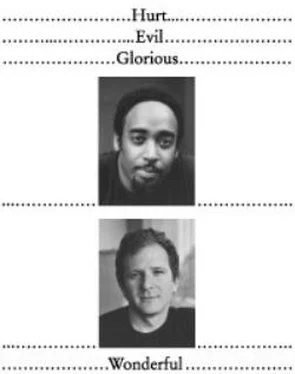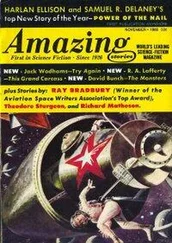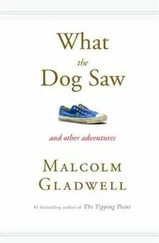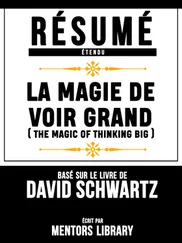Malcolm Gladwell - Blink - The Power of Thinking Without Thinking
Здесь есть возможность читать онлайн «Malcolm Gladwell - Blink - The Power of Thinking Without Thinking» весь текст электронной книги совершенно бесплатно (целиком полную версию без сокращений). В некоторых случаях можно слушать аудио, скачать через торрент в формате fb2 и присутствует краткое содержание. Жанр: Культурология, Психология, на английском языке. Описание произведения, (предисловие) а так же отзывы посетителей доступны на портале библиотеки ЛибКат.
- Название:Blink: The Power of Thinking Without Thinking
- Автор:
- Жанр:
- Год:неизвестен
- ISBN:нет данных
- Рейтинг книги:3 / 5. Голосов: 1
-
Избранное:Добавить в избранное
- Отзывы:
-
Ваша оценка:
- 60
- 1
- 2
- 3
- 4
- 5
Blink: The Power of Thinking Without Thinking: краткое содержание, описание и аннотация
Предлагаем к чтению аннотацию, описание, краткое содержание или предисловие (зависит от того, что написал сам автор книги «Blink: The Power of Thinking Without Thinking»). Если вы не нашли необходимую информацию о книге — напишите в комментариях, мы постараемся отыскать её.
Blink: The Power of Thinking Without Thinking — читать онлайн бесплатно полную книгу (весь текст) целиком
Ниже представлен текст книги, разбитый по страницам. Система сохранения места последней прочитанной страницы, позволяет с удобством читать онлайн бесплатно книгу «Blink: The Power of Thinking Without Thinking», без необходимости каждый раз заново искать на чём Вы остановились. Поставьте закладку, и сможете в любой момент перейти на страницу, на которой закончили чтение.
Интервал:
Закладка:
In the midst of this upheaval, Pepsi began running television commercials around the country, pitting Coke head-to-head with Pepsi in what they called the Pepsi Challenge. Dedicated Coke drinkers were asked to take a sip from two glasses, one marked Q and one marked M. Which did they prefer? Invariably, they would say M, and, lo and behold, M would be revealed as Pepsi. Coke’s initial reaction to the Pepsi Challenge was to dispute its findings. But when they privately conducted blind head-to-head taste tests of their own, they found the same thing: when asked to choose between Coke and Pepsi, the majority of tasters—57 percent—preferred Pepsi. A 57 to 43 percent edge is a lot, particularly in a world where millions of dollars hang on a tenth of a percentage point, and it is not hard to imagine how devastating this news was to Coca-Cola management. The Coca-Cola mystique had always been based on its famous secret formula, unchanged since the earliest days of the company. But here was seemingly incontrovertible evidence that time had passed Coke by.
Coca-Cola executives next did a flurry of additional market research projects. The news seemed to get worse. “Maybe the principal characteristics that made Coke distinctive, like its bite, consumers now describe as harsh,” the company’s head of American operations, Brian Dyson, said at the time. “And when you mention words like ‘rounded’ and ‘smooth,’ they say Pepsi. Maybe the way we assuage our thirst has changed.” The head of Coke’s consumer marketing research department in those years was a man named Roy Stout, and Stout became one of the leading advocates in the company for taking the results of the Pepsi Challenge seriously. “If we have twice as many vending machines, have more shelf space, spend more on advertising, and are competitively priced, why are we losing [market] share?” he asked Coke’s top management. “You look at the Pepsi Challenge, and you have to begin asking about taste.”
This was the genesis of what came to be known as New Coke. Coke’s scientists went back and tinkered with the fabled secret formula to make it a little lighter and sweeter—more like Pepsi. Immediately Coke’s market researchers noticed an improvement. In blind tastes of some of the early prototypes, Coke pulled even with Pepsi. They tinkered some more. In September of 1984, they went back out and tested what would end up as the final version of New Coke. They rounded up not just thousands but hundreds of thousands of consumers all across North America, and in head-to-head blind taste tests, New Coke beat Pepsi by 6 to 8 percentage points. Coca-Cola executives were elated. The new drink was given the green light. In the press conference announcing the launch of New Coke, the company’s CEO, Roberto C. Goizueta, called the new product “the surest move the company’s ever made,” and there seemed little reason to doubt what he said. Consumers, in the simplest and most direct manner imaginable, had been asked for their reaction, and they had said they didn’t much like the old Coke but they very much liked the new Coke. How could New Coke fail?
But it did. It was a disaster. Coke drinkers rose up in outrage against New Coke. There were protests around the country. Coke was plunged into crisis, and just a few months later, the company was forced to bring back the original formula as Classic Coke—at which point, sales of New Coke virtually disappeared. The predicted success of New Coke never materialized. But there was an even bigger surprise. The seemingly inexorable rise of Pepsi—which had also been so clearly signaled by market research—never materialized either. For the last twenty years, Coke has gone head-to-head with Pepsi with a product that taste tests say is inferior, and Coke is still the number one soft drink in the world. The story of New Coke, in other words, is a really good illustration of how complicated it is to find out what people really think.
The difficulty with interpreting the Pepsi Challenge findings begins with the fact that they were based on what the industry calls a sip test or a CLT (central location test). Tasters don’t drink the entire can. They take a sip from a cup of each of the brands being tested and then make their choice. Now suppose I were to ask you to test a soft drink a little differently. What if you were to take a case of the drink home and tell me what you think after a few weeks? Would that change your opinion? It turns out it would. Carol Dollard, who worked for Pepsi for many years in new-product development, says, “I’ve seen many times when the CLT will give you one result and the home-use test will give you the exact opposite. For example, in a CLT, consumers might taste three or four different products in a row, taking a sip or a couple sips of each. A sip is very different from sitting and drinking a whole beverage on your own. Sometimes a sip tastes good and a whole bottle doesn’t. That’s why home-use tests give you the best information. The user isn’t in an artificial setting. They are at home, sitting in front of the TV, and the way they feel in that situation is the most reflective of how they will behave when the product hits the market.”
Dollard says, for instance, that one of the biases in a sip test is toward sweetness: “If you only test in a sip test, consumers will like the sweeter product. But when they have to drink a whole bottle or can, that sweetness can get really overpowering or cloying.” Pepsi is sweeter than Coke, so right away it had a big advantage in a sip test. Pepsi is also characterized by a citrusy flavor burst, unlike the more raisiny-vanilla taste of Coke. But that burst tends to dissipate over the course of an entire can, and that is another reason Coke suffered by comparison. Pepsi, in short, is a drink built to shine in a sip test. Does this mean that the Pepsi Challenge was a fraud? Not at all. It just means that we have two different reactions to colas. We have one reaction after taking a sip, and we have another reaction after drinking a whole can. In order to make sense of people’s cola judgments, we need to first decide which of those two reactions most interests us.
Then there’s the issue of what is called sensation transference. This is a concept coined by one of the great figures in twentieth-century marketing, a man named Louis Cheskin, who was born in Ukraine at the turn of the century and immigrated to the United States as a child. Cheskin was convinced that when people give an assessment of something they might buy in a supermarket or a department store, without realizing it, they transfer sensations or impressions that they have about the packaging of the product to the product itself. To put it another way, Cheskin believed that most of us don’t make a distinction—on an unconscious level—between the package and the product. The product is the package and the product combined.
One of the projects Cheskin worked on was margarine. In the late 1940s, margarine was not very popular. Consumers had no interest in either eating it or buying it. But Cheskin was curious. Why didn’t people like margarine? Was their problem with margarine intrinsic to the food itself? Or was it a problem with the associations people had with margarine? He decided to find out. In that era, margarine was white. Cheskin colored it yellow so that it would look like butter. Then he staged a series of luncheons with homemakers. Because he wanted to catch people unawares, he didn’t call the luncheons margarine-testing luncheons. He merely invited a group of women to an event. “My bet is that all the women wore little white gloves,” says Davis Masten, who today is one of the principals in the consulting firm Cheskin founded. “[Cheskin] brought in speakers and served food, and there were little pats of butter for some and little pats of margarine for others. The margarine was yellow. In the context of it, they didn’t let people know there was a difference. Afterwards, everyone was asked to rate the speakers and the food, and it ended up that people thought the ‘butter’ was just fine. Market research had said there was no future for margarine. Louis said, ‘Let’s go at this more indirectly.’
Читать дальшеИнтервал:
Закладка:
Похожие книги на «Blink: The Power of Thinking Without Thinking»
Представляем Вашему вниманию похожие книги на «Blink: The Power of Thinking Without Thinking» списком для выбора. Мы отобрали схожую по названию и смыслу литературу в надежде предоставить читателям больше вариантов отыскать новые, интересные, ещё непрочитанные произведения.
Обсуждение, отзывы о книге «Blink: The Power of Thinking Without Thinking» и просто собственные мнения читателей. Оставьте ваши комментарии, напишите, что Вы думаете о произведении, его смысле или главных героях. Укажите что конкретно понравилось, а что нет, и почему Вы так считаете.












